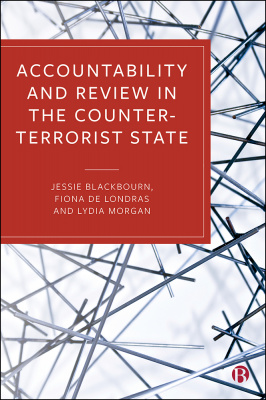 One of our key questions was what actors involved in counter-terrorism review (CTR) considered the purposes of CTR to be. We explored this in our interviews, and while interviewees indicated different starting propositions about what counter-terrorism review is for, in the end there was a fairly narrow range of purposes identified across the wide range of people that we spoke to. These were:
One of our key questions was what actors involved in counter-terrorism review (CTR) considered the purposes of CTR to be. We explored this in our interviews, and while interviewees indicated different starting propositions about what counter-terrorism review is for, in the end there was a fairly narrow range of purposes identified across the wide range of people that we spoke to. These were:
- To assess levels of threat and adequacy of the response thereto;
- To scrutinise the justification, necessity, and proportionality of counter-terrorism law and policy;
- To analyse the lawfulness of individual counter-terrorism decisions and actions;
- To identify and challenge flaws, discrimination, and procedural unfairness in practice;
- To evaluate effectiveness, identify areas for improvement, and inform Parliament.
Broadly speaking, we can see that these purposes connect to operational, policy-related, and legalistic concerns about counter-terrorism, but all are evaluative.
Although narrower than we might have anticipated, the purposes interviewees indicated suggest that counter-terrorism reviews may be undertaken in distinct ways. Our interviews suggest that the review mechanism’s sense of the purpose of review may determine what questions it pursues, and how it goes about gathering the evidence required to answer them. Importantly, review mechanisms are not necessarily static as they may take different approaches across different reviews, and subject their own activities and approaches to review and revision as part of its broader role. So perceived purposes and approaches may vary from review to review, even within the same review mechanism.
Some approaches to counter-terrorism review are more amenable to considering counter-terrorism’s unintended consequences than others. A narrow review that asks, for example, whether a law achieves its own objectives might be limited in its scope. Whereas a broader review that asks, for example, about the impact of Prevent on freedom of speech and on universities’ ability to identify and support vulnerable students may be able to consider the unintended consequences of counter-terrorism policies and legislation in more depth. These reviews can advance our understanding of the counter-terrorist state and enable broader debate and contestation, and the multiplicity of approaches was not considered undesirable by most of our interviewees. Indeed, one person we spoke to suggested that the variation in approaches to review across the assemblage means that ‘there are different aspects of scrutiny at different levels’.
This does not mean that the CTR assemblage is designed, per se, or that–as one interviewee put it–there are ‘clear delineations of responsibility’ within it. Indeed, most people we spoke to thought this was not the case, but rather than thee assemblage operated as a kind of pluralistic jumble. This jumble was in part a product of how the assemblage had developed. Our interviewees tended to see the somewhat piecemeal emergence of counter-terrorism review as mirroring the emergence of the counter-terrorist state itself. As different powers and responsibilities were created, review mechanisms to consider them were either established or had their remits expanded. In addition, institutional innovations were put in place to allow existing processes to be used as routes for accountability in counter-terrorism, such as the use of Special Advocates in closed material proceedings. Some existing entities with broad regulatory powers had their regulatory functions expanded to include the monitoring of counter-terrorism activities by their existing regulatees, such as the Office for Students. A number of our interviewees suggested that, in at least some cases, reviews had been mandated for instrumental reasons, such as sunset clauses inserted into legislation as a conciliatory gesture, or that reviews had been established with narrow terms of reference, seemingly to produce outcomes that will legitimate desired government action.
This suggests that, for our interviewees, the counter-terrorism review space is emergent rather than ‘designed.’ As a result, it is not surprising that some overlap exists between what the different review mechanisms do, and the purposes they attempt to pursue.
This is adapted from Chapter 3 of Accountability and Review in the Counter-Terrorist State
